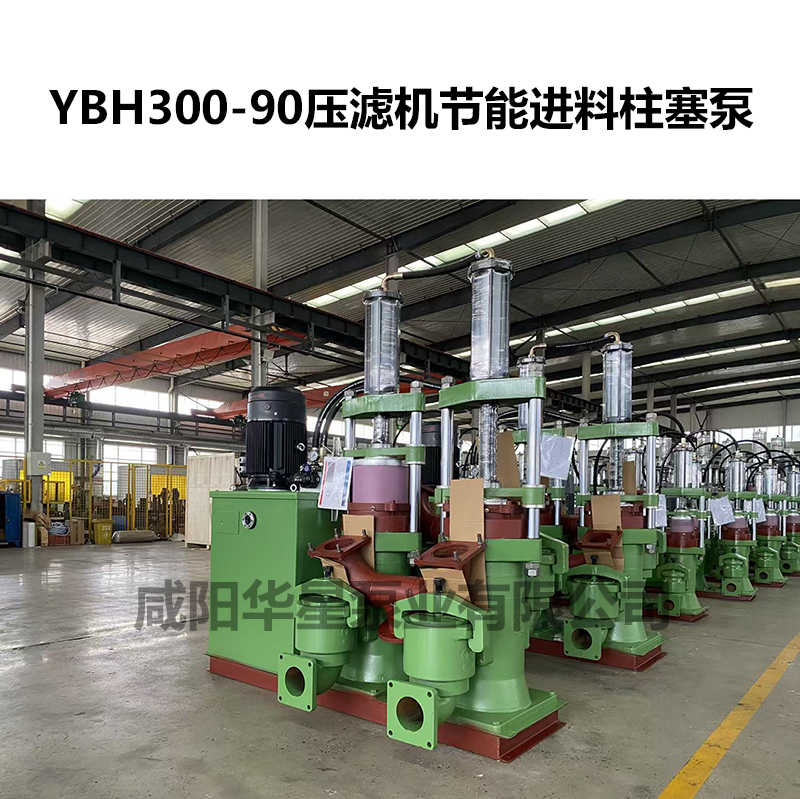Plate and frame filter press feeding pump
Ceramic plunger mud pump is a commonly used feed pump for plate and frame filter presses, which has advantages such as stable pressure, wear resistance, and corrosion resistance. Here is a detailed introduction about it:

Working principle: Ceramic plunger mud pumps are usually hydraulic driven dual cylinder double acting volumetric pumps. The motor drives the gear oil pump, which converts low-pressure oil into high-pressure oil. The high-pressure oil alternately enters two hydraulic cylinders through the reversing valve, driving the hydraulic cylinder piston and then driving the ceramic plunger to perform reciprocating motion. During the reciprocating motion of the plunger, the slurry is sucked and discharged through the inlet and outlet valves of the working cylinder, thereby achieving the transportation of fluids such as slurry.
Performance Characteristics
Flexible pressure regulation: The working pressure of ceramic plunger mud pumps can be flexibly adjusted within a large range, generally ranging from 0-2.5MPa or even higher, with a maximum of 5MPa. During the pressure filtration process, as the density of the filter cake increases, it can automatically switch from low-pressure high displacement slurry transportation to high-pressure low displacement slurry transportation, and maintain a constant pressure when reaching the constant pressure state of the filter press.
Good pressure stability: runs smoothly with minimal pressure fluctuations, providing stable feed pressure for the filter press, which is beneficial for ensuring the filtration effect and filter cake quality.
Strong wear resistance: Its core components are made of ceramic materials with extremely high hardness, comparable to diamond. When transporting highly abrasive media such as coal slurry particles and gangue debris, the wear amount is minimal, which can significantly extend the maintenance cycle of the equipment.
Excellent corrosion resistance: Ceramic materials have stable chemical properties and hardly react with acidic and alkaline substances in coal slurry water. They can effectively resist the erosion of corrosive media such as coal slurry water, ensuring the long-term stable operation of the pump body and internal key components.
Low energy consumption: Due to its efficient hydraulic drive system and good flow and pressure control, it has relatively low energy consumption while meeting the feeding requirements of the filter press.
Applicable working conditions: Ceramic plunger mud pump is suitable for long-distance and high-pressure transportation of high concentration and high hardness coal slurry materials, as well as working conditions that require high pressure filtration effect. It is widely used in industries such as chemical, metallurgical, petroleum, printing and dyeing, ceramics, food, pharmaceuticals, building materials, environmental protection, coal, metal and non-metal minerals for filter press feeding.
Common models: Taking Xianyang Huaxing Pump Industry's YB series ceramic plunger mud pump as an example, conventional pumps currently have more than ten specifications in nine series, including YB85, YB120, YB140, YB200, YB250, YB300, YB350, YB400, YB500, etc. The flow rate can range from 1.5m ³/h to 200m ³/h.
Appearance structure: Ceramic plunger mud pumps are usually composed of components such as motors, gear oil pumps, directional valves, hydraulic cylinders, ceramic plungers, working cylinders, inlet valves, and outlet valves. The overall structure is relatively simple. Its appearance is mostly green, with a base below the pump body and exposed components such as plungers above, connected to hydraulic pipelines nearby.
上一篇:High head energy-saving mud pump
下一篇:没有了
